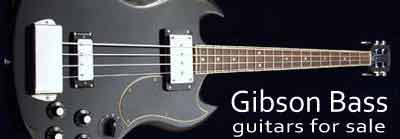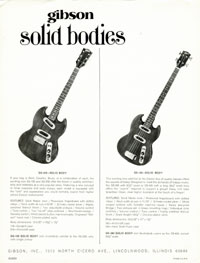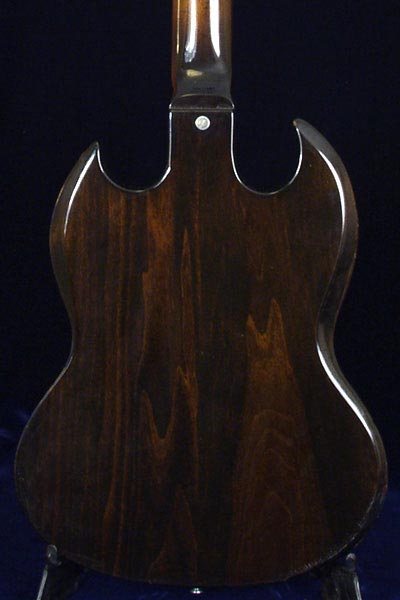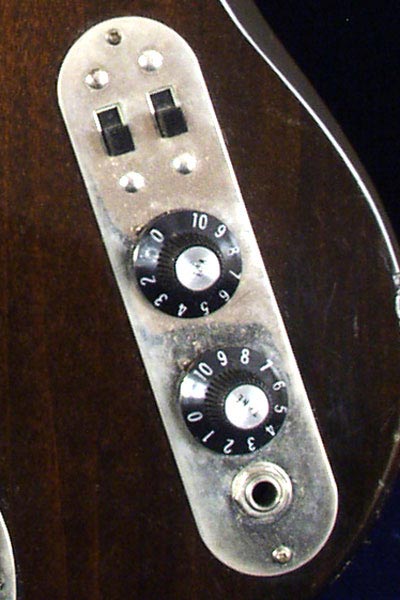• Solid body • Set maple neck • Rosewood fretboard • Two single-coil pickups • 34 1/2 inch scale • Unspecified body wood. Alder?
The Gibson SB 300 and 400 were a pretty short-lived phenomenon. The vast majority of these Kalamazoo-made basses were produced in 1971, with a few more in '72 and '73, but by late '72 they were no longer listed in price lists, in favour of two new bass models, the SB350 and SB450 - see SB shipping totals.
They never made it into any American Gibson catalogue, although they did appear in this 1971 publicity sheet, also advertising the Gibson SG200 guitar.
The June 1971 price for either SB model was $289.50, compared to $350 for the EB0/EB0L and $410 for the EB3/EB3L.

Gibson SB bass hardware and components
The bass pictured is completely original except for the bridge saddles. They were particularly poor-wearing on this multiplex bridge, which is one of the reasons few of these basses still have them fitted. Other features are completely standard for this model: pickups are Gibson single-coils (no difference between neck and bridge, also used on the SG 200, SG250 and ES-320 guitars), and the tuning keys are Schaller M-4.
Despite being SG-shaped, and finished in walnut or cherry, these basses were very different to the EB basses available in 1971. In fact the body shape and colour about the only thing these basses have in common. SB: Alder body, a two-piece maple neck, small angle (7o) headstock angle and single coil pickups EBs: mahogany body, three-piece mahogany neck, 13o headstock angle and humbuckers. The difference can certainly be heard. Compare the soundclips below with soundclips of a 1971 EB3L
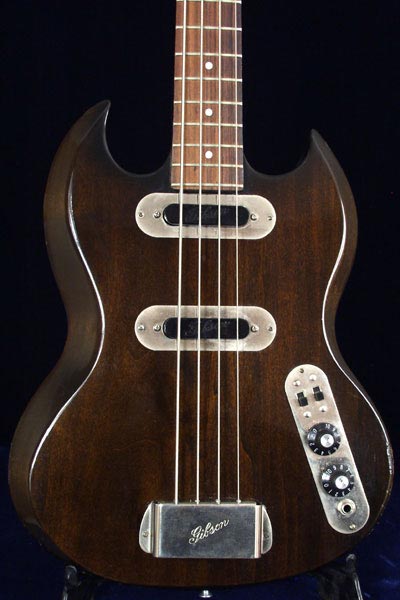
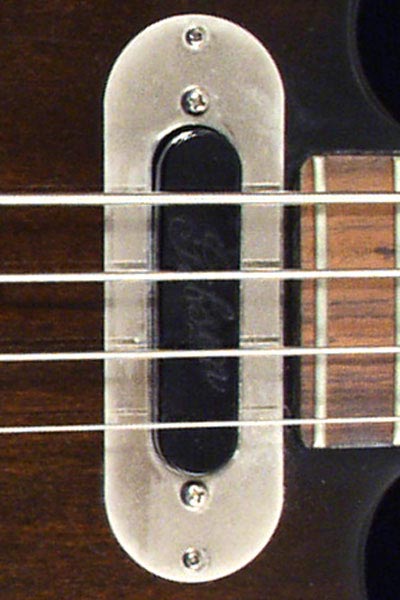
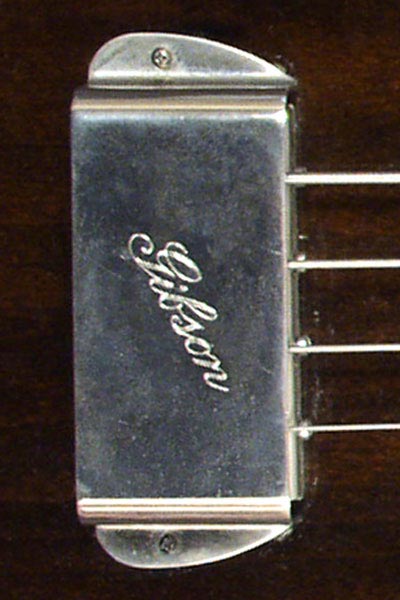
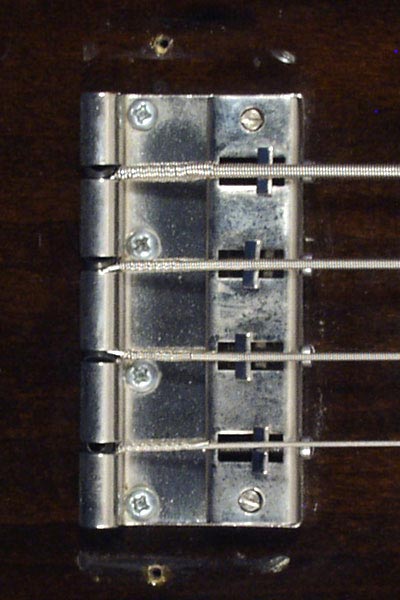
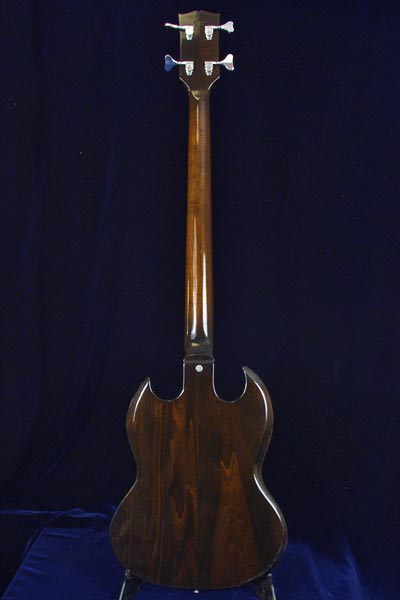
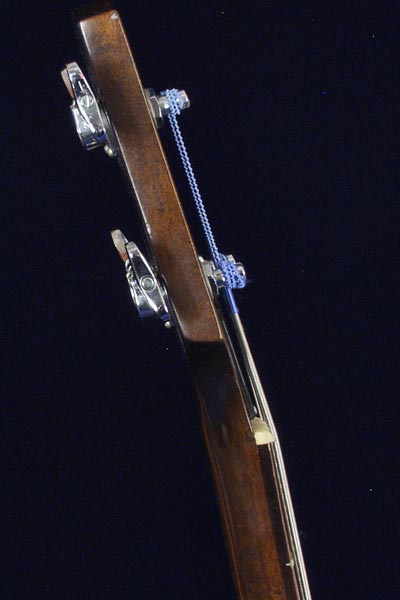
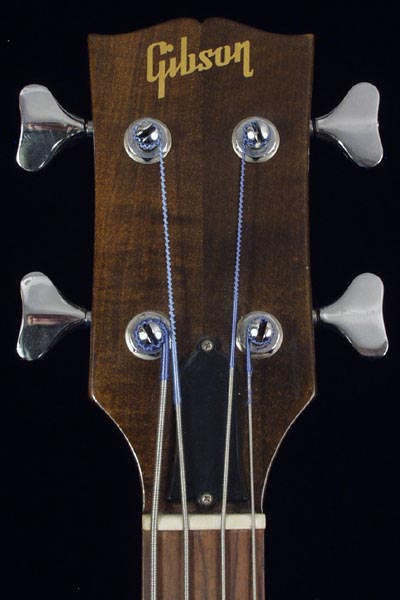
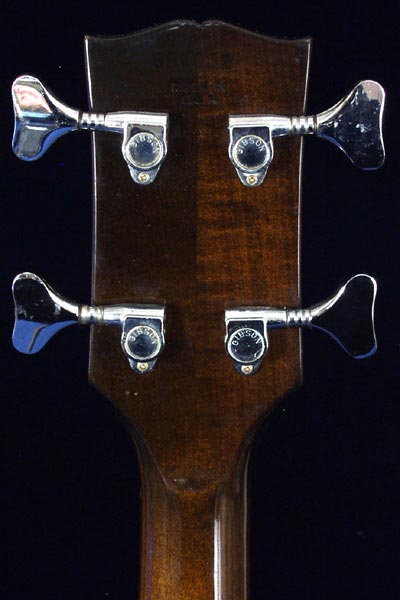
Gibson SB-400 wiring

The volume and tone control potentiometers (part CBA 811 3701) in this bass are both the same; 250k and dated from mid 1966. These pots were also used in 1960s Kalamazoo KG guitars. The manufacturer code is 'BD'. It is unusual to find Gibson instruments at the beginning of their production run with pot codes so much older than the instrument. But then, almost all Gibson-used pots of this period were made by CTS or Centralab. These pots are stock however, and many early SB-300 and SB-400 basses were fitted with these pots.
Gibson SB-400 soundclips
The following SB-400 soundclips were recorded directly into an M-Audio MobilePre USB external sound card - no amplifier or other effects. Roundwound strings.
Both pickups, volume - 10, tone - 10 played with a pick
Neck pickup, volume - 10, tone - 0 played finger style
Neck pickup, volume - 10, tone - 10 played finger style
Bridge pickup, volume - 10, tone - 10 played finger style
The following soundclips were recorded as above but with flatwound strings.
Both pickups, volume - 10, tone - 10 played with a pick
Neck pickup, volume - 10, tone - 10 played finger style
Neck pickup, volume - 10, tone - 0 played finger style
Bridge pickup, volume - 10, tone - 10 played finger style


